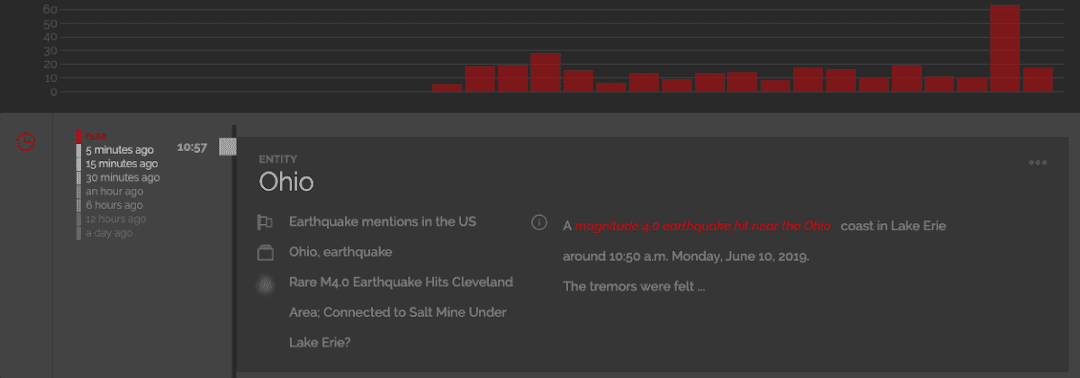Everyone has a different use case that needs to be monitored, and we enable a vast amount of use cases for tailored collection and monitoring with OIMonitor at a very high scale and have been doing so for about 9 years.
Forget about the “deep, dark, web”– for up-to-date information spanning across multiple data sources, I need to pick up chatter modeled around events that I care about. In this case, I need to create a simple model to identify different types of events across multiple data sources. Since we pick up chatter from many different data streams, this can become very helpful for my travel, as well as in my tracking disinformation (more on this later) or “the unmentioned news.”
A few weeks ago, I was wondering what threats the US as a whole faces on a daily basis. I’ve noticed that many major local events don’t seem to be reported nationally as often as I’d expect. Then it hit me: I can configure OIMonitor to watch for various types of catastrophic events based on each state in the country.
I started by building a set of entities that represented each state in the US:

After building out the list of state entities, I created a fairly comprehensive list of about 30 major threats and disaster types:

Then I created a wide selection of data sources OIMonitor could use to collect information on these events: news sites, RSS feeds, forums, and social media.
After a few weeks of collecting data, I was amazed at the number of catastrophic events many Americans are facing daily, from tornados to plane crashes to dust storms. The data is truly amazing.
Did you know that there was a major dust storm in Texas a few days ago, or that there was a 4.0 earthquake in Ohio?
This is a fantastic example of how OIMonitor can be used to help us understand more about threats in our environment. We simply start with an idea or theory, select our data sources, then let OIMonitor do the heavy lifting of data gathering.

In the example above, you can see the trending bar spike up from all the chatter surrounding the earthquake that hit Ohio. While this wasn’t an extremely major earthquake, the number of media sources tracking it was very small compared to other threats.
These types of observations have led me to a somewhat obvious conclusion that media sources and social networks tend to devote much more time to threats that affect a few larger cities. Based on the data in OIMonitor, we know there were many more threats across the country that were not being reported widely.
The idea that there is data being missed by the majority of people is something we can quantify in OIMonitor. Instead of weather and natural disasters, these could be things like leaked credentials, stolen credit cards, trafficked children or just about anything.
Automated monitoring in OIMonitor allows us to see the things in those cracks we would have missed before.
